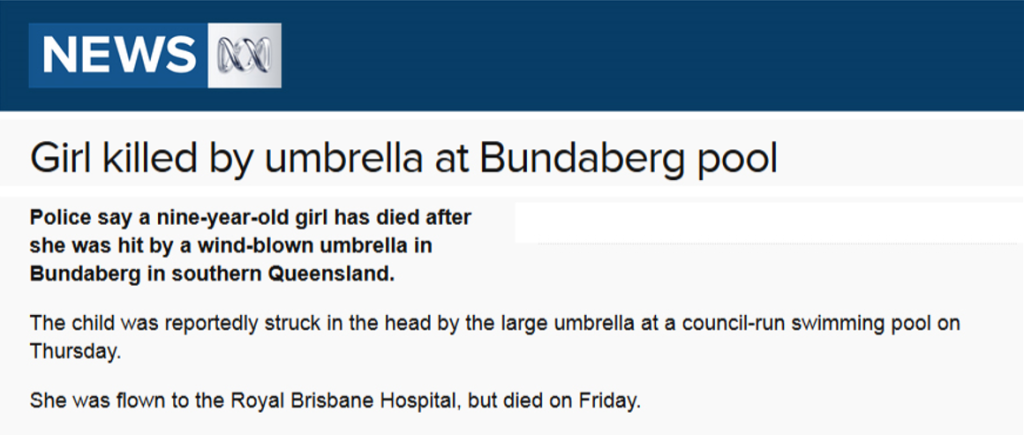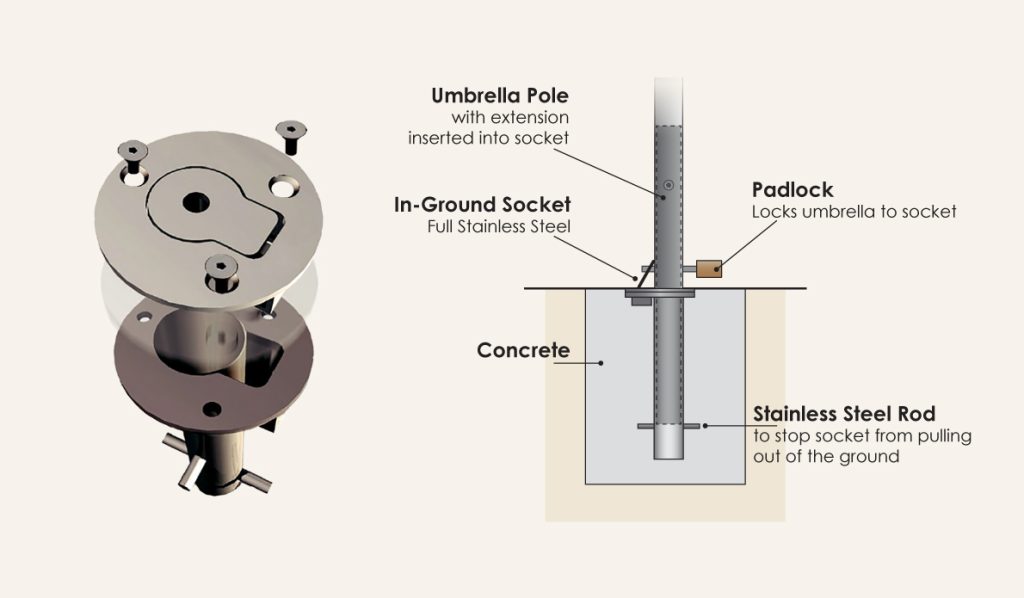A Call for Safety and Strength in Design
Public spaces are often adorned with market umbrellas that offer shade and aesthetic appeal, but recent tragic events have shed light on the overlooked dangers associated with these common structures. Timber umbrellas, in particular, pose a serious threat when they fail to withstand the forces of nature. This article expands upon the urgent need to re-evaluate our choice of materials and securing methods for public umbrellas, emphasising the importance of public safety over cost-saving measures.
A Heartbreaking Wake-Up Call

The incident at a public pool, where a young life was tragically taken by a timber umbrella, serves as a sobering reminder of the consequences of inadequate safety measures. The report of this incident has catalysed a discourse on liability and preventive action. It reveals the disturbing fact that despite previous close calls with flyaway umbrellas, comprehensive measures to secure them were not implemented. Such an oversight is a hard lesson on the importance of proactive safety measures.
The Flawed and Unreliable Nature of Timber Umbrellas
While timber may present a traditional and natural look, it is inherently less suited to withstand variable weather conditions. Wind tunnel tests have illustrated a stark reality: timber umbrellas can fail at wind speeds considered safe for other materials. These tests mimic the unpredictable gusts of wind that occur naturally and have shown that the breaking point of timber is dangerously low for objects designed to provide safety. Timber’s tendency to splinter and break not only compromises the structure but also creates sharp fragments that can cause injury or worse.
Aluminium: The Superior Choice
Aluminium stands as the material of choice for umbrella frames due to its superior strength-to-weight ratio and flexibility. Unlike timber, aluminium can endure significant force and bounce back to its original shape. This ductility is crucial for absorbing and dissipating wind energy, preventing the umbrella from being torn from its base. In the event of extreme wind conditions the quality grade aluminium may bend, but it wont snap and result in flying projectiles. Furthermore, aluminium is resistant to corrosion, ensuring longevity even in the harsh outdoor conditions that often lead to the deterioration of timber.
Securing the Future: The Role of In-Ground Sockets

Beyond the selection of materials, the stability of umbrellas is paramount. In-ground sockets are the gold standard for anchoring umbrellas firmly to the ground. These sockets are typically made of stainless steel or and are designed to withstand the torque and uplift forces that a strong wind can impart on an umbrella. The integration of these sockets into the design of public spaces ensures that umbrellas remain in place, even when faced with unexpected weather phenomena.
A Proactive Stance on Public Safety
With the knowledge of the risks associated with timber umbrellas, it is imperative that businesses, public space designers, and regulatory bodies take a proactive stance. The process involves auditing existing umbrellas, evaluating the risks, and then systematically replacing them with safer alternatives. It also means educating the public about the potential dangers and the steps taken to mitigate them, thus promoting a culture of safety and responsibility.
Engaging With a Solution
While the switch to aluminium may seem more expensive, it actually is not. The price of aluminium umbrellas are on par with timber umbrellas. Often, superior aluminium umbrellas cost less than inferior timber umbrellas.
However, the initial investment for purchasing and installing in-ground sockets may be higher than a standard umbrella base, but the long-term savings in terms of lives and liabilities cannot be overstated. It’s a responsible choice that business owners and community leaders can make to show they value human life and public welfare.
Not to mention the in-ground socket will be safe and secure for many, many years.
In light of the stark differences in safety, it is incumbent upon all stakeholders, from manufacturers to end-users, to advocate for and implement safer alternatives. We owe it to ourselves and to the memory of those affected by such preventable tragedies to demand better, safer, and more reliable designs for public amenities.
The Imperative for Change
The loss of a young life is not just a statistic; it is a clarion call for change. It brings to light the urgent need to re-evaluate the materials and safety protocols we often take for granted. Timber umbrellas, with their vulnerability to elemental forces, must be phased out in favour of aluminium structures that can withstand the unpredictable nature of the outdoors. By embracing the strength of aluminium and the security of in-ground sockets, we can prevent accidents and ensure that leisure spaces remain havens of joy, not sites of sorrow.

